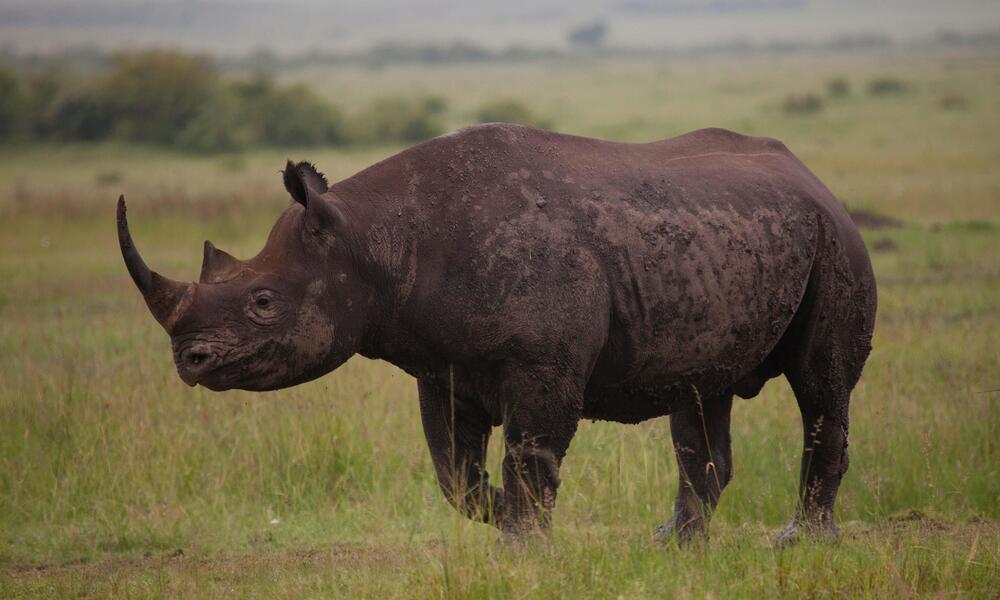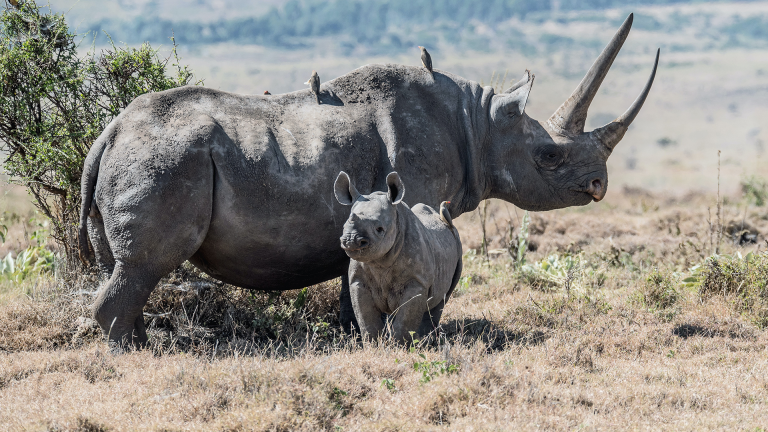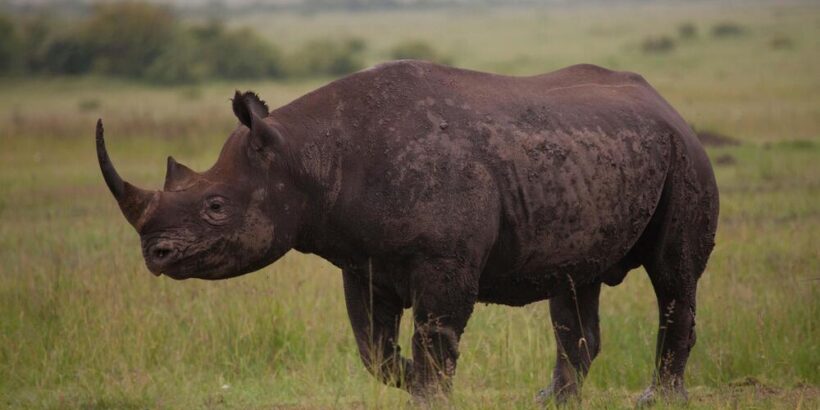Rhinoceros Crack + Product Key

Rhinoceros Crack (rhino), commonly abbreviated to rhinoceros, is one of five extant species (or many extinct species) of perissodactyls in the family Rhinocerotidae; it may also refer to a member of one of the extinct species of the superfamily Rhinocerotoidea. Two of the existing species are native to Africa and three to South and Southeast Asia. Rhinos are among the largest remaining megafauna: as adults, they all weigh at least a ton. They have a herbivorous diet, have a small brain of 400 to 600 g (14 to 21 oz) for mammals their size, one or two horns, and a thick protective skin of 1.5 to 5 cm (0.59 to 1.97 in) . from collagen layers. positioned in a grid structure. They generally eat leafy material, although their ability to ferment food in the hindgut allows them to feed on more fibrous plant material when necessary. In contrast to other perissodactyls, the two African rhino species have no teeth at the front of their mouths; Rather, they rely on their lips to gather food.[2] Rhinos are killed by poachers for their horns, which they buy and sell at high prices on the black market, resulting in most living rhino species being considered endangered.
Today’s market for rhino horn is driven primarily by China and Vietnam, where it is purchased by wealthy consumers for use in traditional Chinese medicine, among other things. Rhino horns are made of keratin, the same material as hair and nails, and there is no clear evidence of their health benefits.[3][4][5] There is also a market for rhino horn dagger handles in Yemen, which was the main demand for rhino horn in the 1970s and 1980s. The word rhinoceros is derived from the Latin of ancient Greek: ῥῑνόκερως, which is composed of ῥῑνο – (rhino-, “nose”) and κέρας (Keras, “horn”) with a horn on the nose. The name has been used since the 14th century.[8] The family Rhinocerotidae includes only four extant genera: Ceratotherium (white rhinoceros), Diceros (black rhinoceros), Dicerorhinus (Sumatra rhinoceros), and Rhinoceros (Indian and Javanese rhinoceros). Living species are divided into three categories. The two African species, the white rhinoceros and the black rhinoceros, belong to the Dicerotini tribe, which emerged in the middle Miocene, around 14.2 million years ago.
You may also like this FL Studio Crack
Rhinoceros Crack Features
- The species diverged in the early Pliocene (about 5 million years ago). The main difference between black and white rhinos Rhinoceros Activation Key.
- is the shape of their mouths: white rhinos have wide, flat lips for grazing, while black rhinos have long, pointed lips.
- eating foliage. There are two living species of rhinoceros, the Indian rhinoceros and the Javan rhinoceros, separated about.
- 10 million years ago. The Sumatran rhinoceros is the only surviving member of the Dicerorhinini.[9] A subspecific.
- hybrid white rhinoceros (Ceratotherium s. simum × C. s. cottoni) was bred at the Dvůr Králové Zoo (Dvur Kralove nad Labem.
- Zoological Garden) in the Czech Republic in 1977. Interspecific hybridization of blacks and whites has also been confirmed.
Rhinoceros Crack System Requirements
- [10] While the black rhinoceros has 84 chromosomes (diploid number, 2N, per cell), all other rhinoceros species have Rhinoceros Product Key.
- 82 chromosomes. Chromosome polymorphism can lead to a variation in the number of chromosomes. For example,
- in one study there were three northern white rhinos with 81 chromosomes.[11] There are two subspecies of white rhinoceros:
- the southern white rhinoceros (Ceratotherium simum simum) and the northern white rhinoceros (Ceratotherium simum cottoni).
- In, the southern subspecies had a wild population of 20,405 individuals, making it the most common rhino subspecies in the world.
- The northern subspecies is threatened with extinction; there are only two females left in captivity. There is no conclusive.

What’s the new Rhinoceros Crack
- explanation for the name “white rhinoceros”? The common idea is that “white” is a corruption of the Afrikaans word wyd or Rhinoceros Serial Key.
- the Dutch word wijd (or its other possible spellings Whyde, wide, etc.), which means “wide” and refers to the square lips.
- of the rhinoceros, is n not true. supported by linguistic studies. The white rhinoceros has a huge body and head,
- a short neck, and a wide chest. Females weigh 1,600 kg (3,500 lb) and males 2,400 kg (5,300 lb). The head and body.
- length is 3.5–4.6 m (11–15 ft) and the shoulder height is 1.8–2 m (5.9–6.6 ft). He has two horns on his snout. The anterior.
- horn is larger than the other horn and averages 90 cm (35 in) long and can be up to 150 cm (59 in) long. The white rhino.
How to install it?
- also has a prominent muscular hump that supports its relatively large head. The color of this animal can range from.
- yellow-brown to slate gray. Most of the hair is on the edges of the ears and tail, with the rest more spread out over the rest of the body.
- White rhinos have a distinctive, wide, flat mouth that is used for grazing.[12] The name “black rhinoceros” (Diceros bicornis) was.
- chosen to distinguish this species from the white rhinoceros (Ceratotherium simum). This can be confusing since the two.
- species don’t really differ in color. There are four subspecies of black rhinoceros: the south-central rhinoceros (Diceros bicornis minor),
- the most numerous, once found from central Tanzania south through Zambia, Zimbabwe, and Mozambique to northern and.
- eastern South Africa; Southwest (Diceros bicornis occidentalis), which are better adapted to the arid and semi-arid savannahs.
- of Namibia, southern Angola, western Botswana, and western South Africa; East Africa (Diceros bicornis michaeli),
- mainly in Tanzania; and West Africa (Diceros bicornis longipes), which was declared extinct in November.[14]
Conclusion
The native Tswana name “Keitloa” describes a South African variant of the black rhinoceros in which the dorsal horn is equal to or longer than the anterior horn.[15] An adult black rhinoceros is 1.50 to 1.75 m (59 to 69 in) high at the shoulder and 3.5 to 3.9 m (11 to 13 ft) long. An adult weighs 850 to 1,600 kg (1,870 to 3,530 lb), in exceptional cases up to 1,800 kg (4,000 lb), with females being smaller than males. Two horns on the skull are made of keratin, with the larger front horn usually being 50 cm long, and in exceptional cases up to 140 cm long. Sometimes a third, smaller horn may develop.[17] The black rhinoceros is much smaller than the white rhinoceros and has a pointed mouth that it uses to grab leaves and twigs when feeding. In the second half of the 20th century, their numbers fell significantly, from around 70,000[18] in the late 1960s to a peak of 2,410 in 1995. Since then, their numbers have increased steadily across the continent, with the number increasing until 4,880 doubled at the end of. The numbers were still 90% lower than three generations ago. The Indian rhinoceros or greater one-horned Rhinoceros Vst.
rhinoceros (Rhinoceros unicornis) has a single horn 20 to 60 cm long.[20] It is almost as big as the African white rhinoceros. Its thick, silver-brown skin folds over its shoulders, back, and torso, giving it an armored appearance. His thighs and shoulders are covered with wart-like bumps and he has very little hair. Adult males are larger than females in the wild, weighing 2,500 to 3,200 kg (5,500 to 7,100 lb). Shoulder height is 1.75 to 2.0 m (5.7 to 6.6 feet). Females weigh about 1,900 kg (4,200 lb) and are 3 to 4 m (9.8 to 13 ft) long. The record-sized specimen weighed about 4,000 kg (8,800 lb).[21] Indian rhinos once lived in many areas from Pakistan to Myanmar and perhaps even parts of China. Due to humans, they are now only found in several protected areas in India (in Assam, West Bengal, and a few pairs in Uttar Pradesh) and in Nepal, as well as a pair in Lal Suhanra National Park in Pakistan that was reintroduced from Nepal. They are restricted to the tall grasslands and forests of the Himalayan foothills. Two-thirds of the world’s Indian rhinos now live only in Kaziranga National Park in the Golaghat district of Assam, India.
